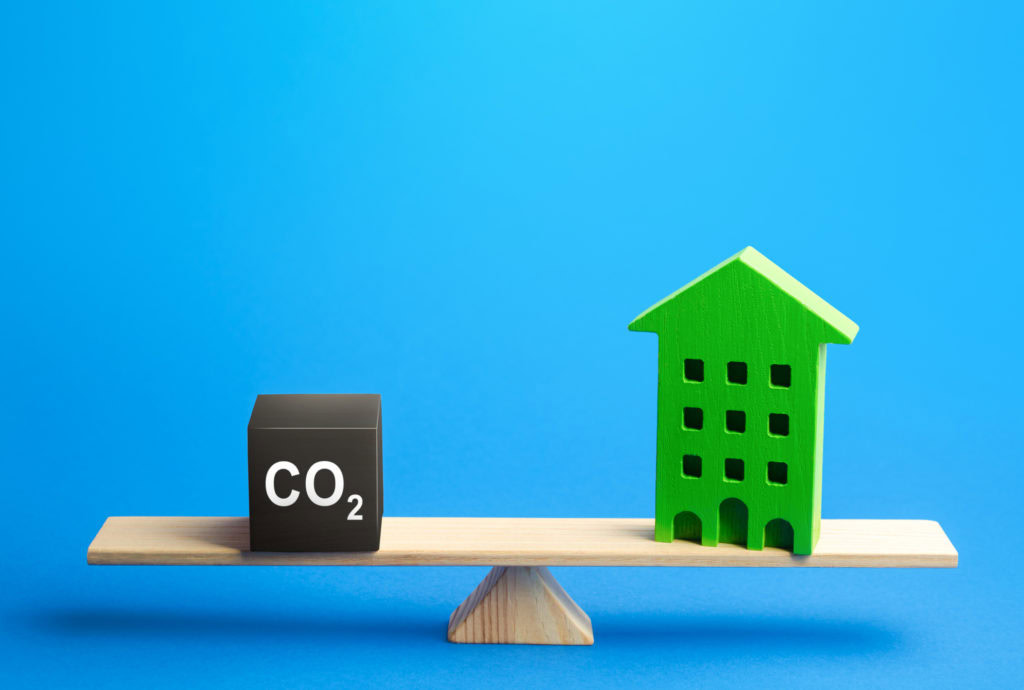By Anelisa Keke, Sustainability Professional specialising in ESG, reward, governance, and law.
Why climate risk management in the real estate sector extends beyond carbon
“The built environment is responsible for 39% of global energy-related carbon emissions.” – International Energy Agency, 2018
As the effects of climate change intensify, many companies and investors in the property sector are taking environmental risks more seriously. One of the most talked-about topics is carbon emissions, but climate risk is about more than just carbon. This article explains why focusing only on carbon emissions in the South African context could provide an incomplete picture of climate risks, as challenges like water outages, waste disposal, and biodiversity loss also pose serious risks for real estate owners and investors.. It also presents an exciting opportunity to think beyond carbon and explore targeted solutions that improve asset-level performance.
This year represents a transition period for the real estate sector, where many companies have started to grapple with ESG for the first time. In the short term, their attention and resources will be pulled in different directions, including rapid decarbonisation. While decarbonization is crucial to climate risk management, it should not be the sole focus area for real estate companies or their investors and funders.
What drives the focus on carbon?
Every real estate company should understand its carbon emissions. The primary methodology for calculating corporate carbon emissions is set by the Greenhouse Gas Protocol, which is widely accepted as the market standard.[1] Property-level carbon emissions tend to be heavily influenced by energy consumption from sources that include diesel, grid-supplied electricity, and renewable energy.
In addition, several South African banks rely on guidance from the Partnership for Carbon Accounting Financials (PCAF)[2] to calculate their financed emissions, including within commercial real estate. PCAF applies a data quality scoring system to calculate the financed emissions attributable to the lender concerned, with higher scores allocated to data obtained from primary sources. This information may be difficult to obtain, as actual building energy consumption data is not always publicly reported by real estate companies.
Carbon emissions incorporate multiple elements of resource consumption. In the real estate context, scope 3 emissions usually far exceed scope 1 and 2 emissions, as the former can include the purchase of electricity that is sold to an end user, i.e. tenants. This also means that water and waste tend to be relatively small components of a company’s carbon emissions.
Based on the above, we understand that using carbon emissions or a reporting framework in isolation to understand a company’s climate risks can lead to energy consumption becoming the dominant focus of its efforts to improve its climate resilience. But, this might be the incorrect approach to take.
The breadth of climate risk management
The IFRS S2: Climate-related Disclosure Standard requires an entity to disclose information about its climate-related risks and opportunities that is useful to primary users of general-purpose financial reports in making decisions relating to providing resources to the entity.[3] This is not confined to carbon emissions or energy consumption. It is worth noting that per the WRI Aqueduct Water Risk Atlas, economic centres such as the Western Cape and Gauteng are anticipated to fall under extremely high water stress by 2030 in a business-as-usual scenario.[4] From a waste perspective, landfills in some major South African cities are reportedly close to reaching capacity.[5] This could pose a significant operational risk to landlords if municipalities are unable to address the issue timeously.
Based on these realities, it could be argued that irrespective of the size of the associated emissions, water, waste and biodiversity can also be relevant to climate risk and opportunities as contemplated in IFRS S2. Their current and potential impact on operating costs and business continuity is quantifiable – ask any commercial asset owner that has dealt with a five-day unplanned municipal water outage. They could materially impact the financial prospects of a real estate company whose operating costs will escalate as it must respond to the constant service interruptions caused by water scarcity and constrained waste removal services.
Due to the factors set out above, it is tempting to focus on carbon or energy consumption as the sole driver of climate risk management. While carbon is important, it is not the sole prism through which we should understand climate risk in South African real estate. Real estate companies and their key stakeholders would do well to remember this.
References
- Word Resources Institute and World Business Council for Sustainable Development. The Greenhouse Gas Protocol: A Corporate Accounting and Reporting Standard: Revised Edition, available here.
- PCAF (2022). The Global GHG Accounting and Reporting Standard Part A: Financed Emissions. Second Edition, available here.
- IFRS Foundation, IFRS S2 Climate-related Disclosures (2023), available here.
- World Resources Institute Aqueduct Water Risk Atlas, available here.
- News24 “Running out of space: Half of Joburg’s landfills hit maximum capacity this year (23 April 2025), available here.
Glossary of Key Terms
| Term | Explanation |
|---|---|
| Carbon emissions | Greenhouse gases (like CO₂) released into the atmosphere, often from burning fossil fuels. A key contributor to climate change. |
| Decarbonisation | The process of reducing carbon emissions, especially from buildings, vehicles, and industries. |
| ESG | Environmental, Social and Governance: non-financial factors investors use to assess a company’s sustainability and ethical impact. |
| Greenhouse Gas (GHG) Protocol | An international standard for measuring and reporting carbon emissions from businesses. |
| Scope 1, 2 and 3 emissions | Categories used to measure emissions:
Scope 1: Direct emissions from owned sources (e.g. company vehicles). Scope 2: Indirect emissions from energy purchased (e.g. electricity). Scope 3: All other indirect emissions, such as from tenants or suppliers. |
| PCAF (Partnership for Carbon Accounting Financials) | A global initiative that helps financial institutions measure the carbon emissions associated with their loans and investments. |
| Financed emissions | Carbon emissions linked to a company’s investment or lending activities (e.g. a bank financing a carbon-intensive building). |
| Primary source data | Original, first-hand information—like a building’s actual electricity usage—rather than estimates or averages. |
| IFRS S2 | A global reporting standard developed by the International Financial Reporting Standards (IFRS) Foundation that guides companies on how to disclose climate-related risks and opportunities. |
| WRI Aqueduct Water Risk Atlas | A tool developed by the World Resources Institute to map areas under water stress or facing water-related risks. |
| Business continuity | The ability of a business to keep operating during unexpected disruptions like water outages or waste removal failures. |
About the Author

Anelisa Keke
A highly regarded senior professional in both the Reward and Sustainability disciplines, Anelisa’s executive experience within a listed company gives her a wider perspective on the myriad issues that corporate South Africa faces today. Her skills span across Sustainability, Reward and Tax, having worked as a consultant as well as a Chief Sustainability Officer for a large REIT. She was the editor of a major thought leadership publication at a global professional services firm and has spoken at multiple conferences and seminars. Anelisa is an admitted attorney and has an LLB and MComm in Tax, both from UCT.



